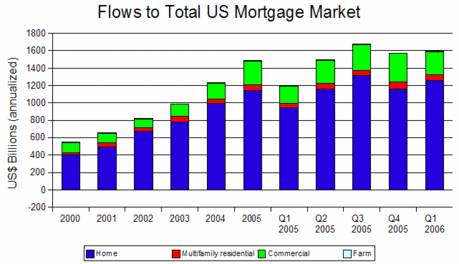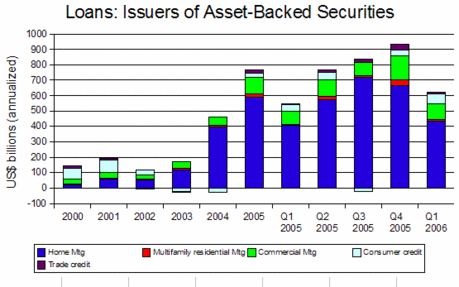After having the market for mortgage securitization virtually to themselves, while Fannie Mae was in the regulatory doghouse, issuers of asset-backed securities again faced fierce competition as government-sponsored enterprises returned with a vengeance to the market.
(See: Agency Bond Issuance Recovers: Q1 2006)
The graph, based on Federal Reserve flow of funds table F126, shows how, after 2003, issuers moved aggressively into the mortgage securitization market, taking over the market space occupied by Fannie Mae:
|
|
|
|
Loans made by Issuers of Asset-Backed Securities
|
|
|
|
|
In Q1 2006, with the return of Fannie Mae, there was a noticeable drop in the volume of loans by issuers of asset-backed securities.
Competition Increases
Having had two years to build a position in this market segment, perfecting loan origination methods and distribution channels, issuers of asset-back securities are not likely to surrender these gains without a fight.
Basically, we now have two clashing sectors in the mortgage securitization market: the government-sponsored agencies (with the political backing of the Democratic Party), and the issuers of asset-backed securities, mainly supported by the private commercial banking sector.
Although it is too soon to say with certainty, this increased competition may result in a greater supply of securitized mortgage paper, which, in turn, would help to depress bond prices, while driving interest rates higher, all other things being equal (which they never are).




